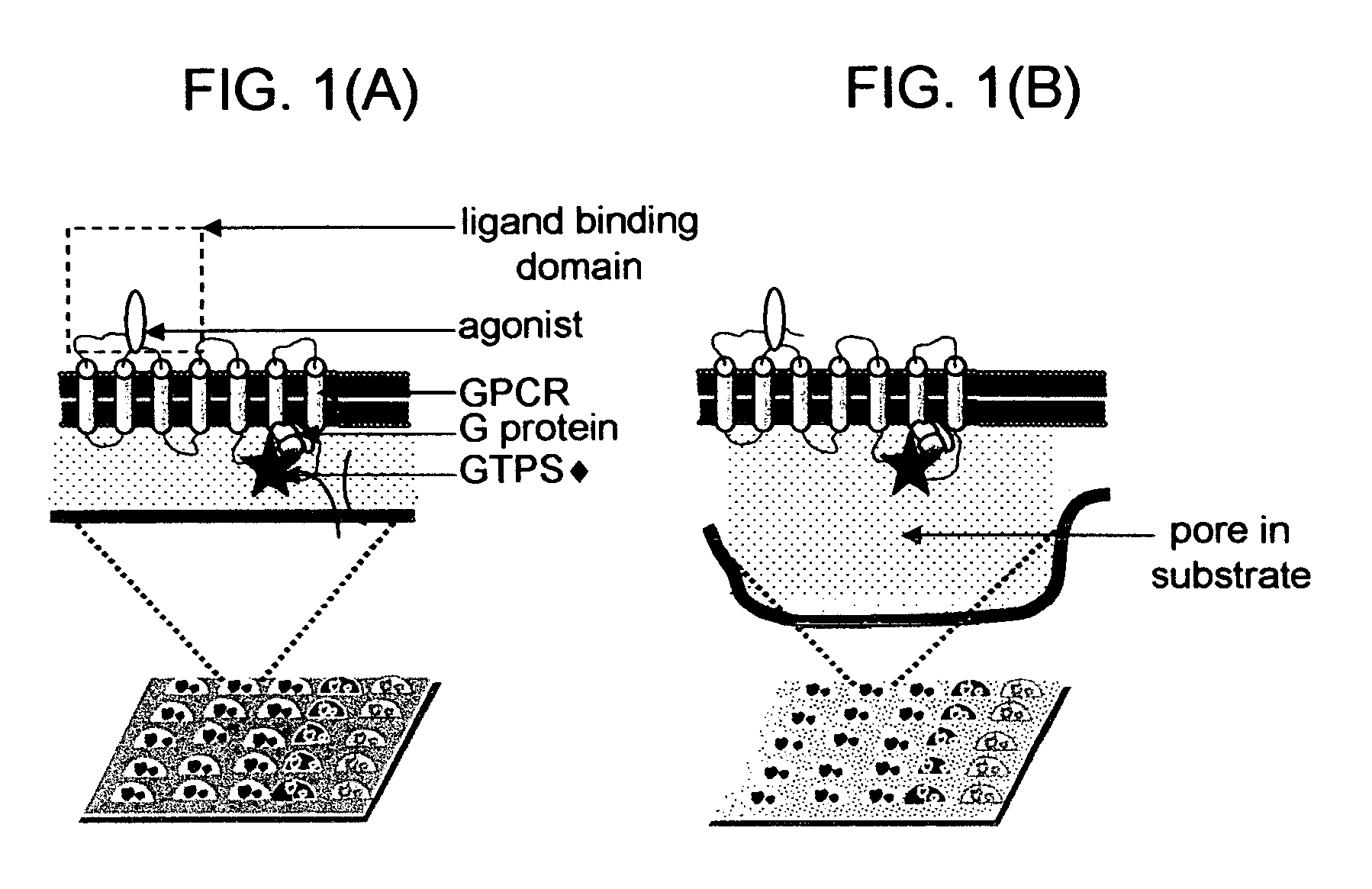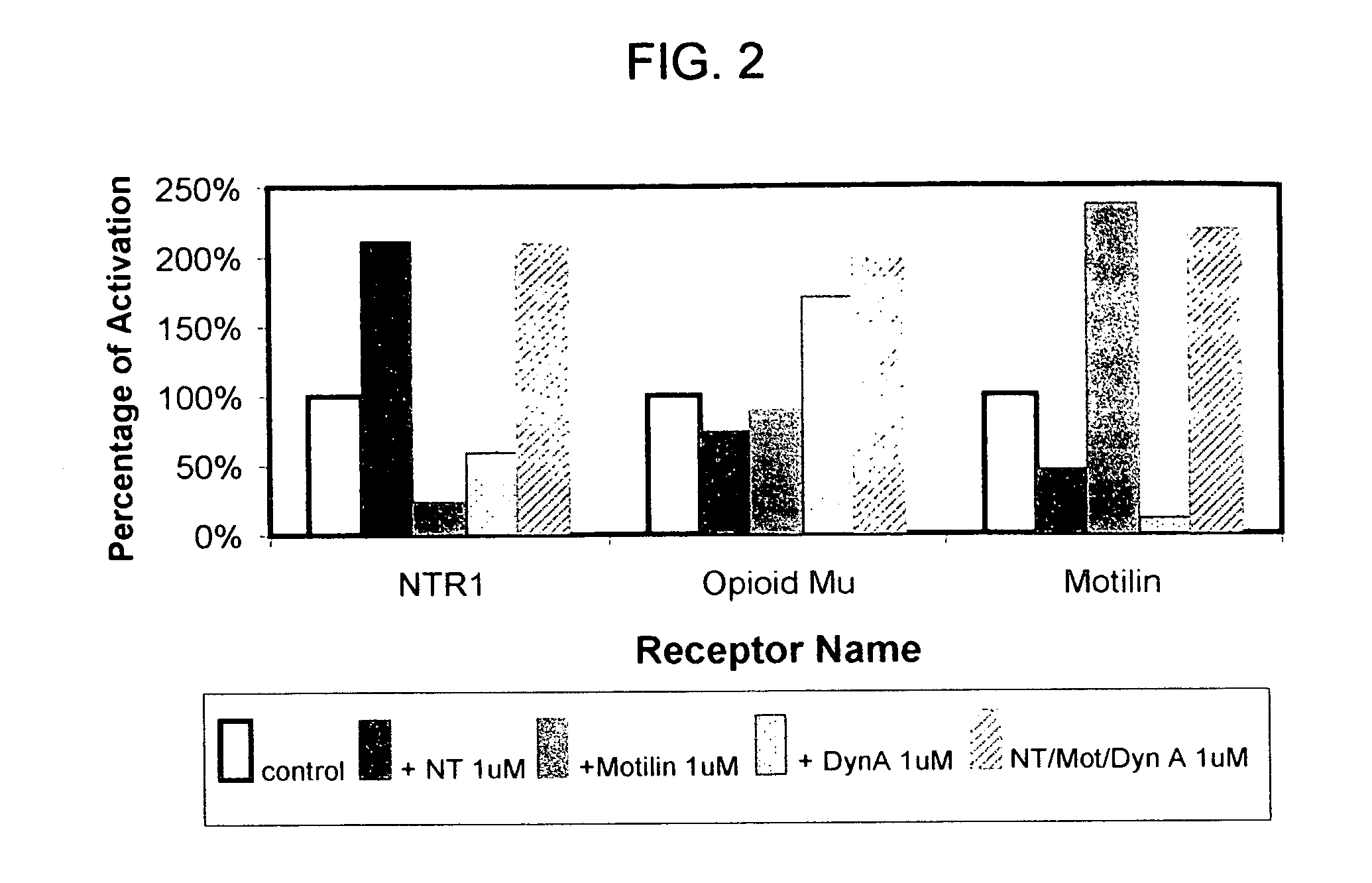Membrane arrays and methods of manufacture
a protein-coupled receptor and membrane array technology, applied in the field of membrane arrays, can solve the problems of limited long-term stability of membrane arrays, poor reproducibility of functional assays, and inability to screen multiple gpcr simultaneously, and achieve the effect of effective transfer of active molecules
- Summary
- Abstract
- Description
- Claims
- Application Information
AI Technical Summary
Benefits of technology
Problems solved by technology
Method used
Image
Examples
example 1
[0110]A porous bi-functional substrate may be obtained from a glass slide coated with a porous layer. The porous layer can be made from a glass frit having the appropriate particle size to form pores having a diameter greater than 0.05 μm, typically of the order of 1 μm after sintering. The top surface of the porous structure is coated by dry printing with aminopropylsilane. Thus the top surface of the substrate becomes slightly positively charged to retain the membrane. The inner part of the porous structure stays as a hydrophilic, hydroxyl rich surface, which may not allows binding of the GPCR protein and membrane inside the pores.
example 2
[0111]As an alternative to example 1, after having dry printed the top surface of the porous substrate with an aminosilane, the inner part of the porous structure can be coated with a silane terminated PEG. This non-binding coating will be grafted onto uncoated glass part, e.g., in the inner part of the porous structure.
example 3
[0112]A slide coated with a porous layer with a pore size of the order of 1 μm is completely coated with an epoxy silane, such as glycidoxypropyltrimethoxysilane, by liquid or vapor phase deposition. The top surface of the porous structure is selectively derivatized by dry printing a diamine or a polyamine. The diamine may be for example ethylene diamine, tetraethylene pentamine, or hexamethylene diamine. The epoxy functions inside the porous structure can be hydrolyzed in acidic conditions to form a hydrophilic, uncharged and non-binding coating inside the pores.
PUM
| Property | Measurement | Unit |
|---|---|---|
| humidity | aaaaa | aaaaa |
| pH | aaaaa | aaaaa |
| pH | aaaaa | aaaaa |
Abstract
Description
Claims
Application Information
 Login to View More
Login to View More - R&D
- Intellectual Property
- Life Sciences
- Materials
- Tech Scout
- Unparalleled Data Quality
- Higher Quality Content
- 60% Fewer Hallucinations
Browse by: Latest US Patents, China's latest patents, Technical Efficacy Thesaurus, Application Domain, Technology Topic, Popular Technical Reports.
© 2025 PatSnap. All rights reserved.Legal|Privacy policy|Modern Slavery Act Transparency Statement|Sitemap|About US| Contact US: help@patsnap.com



